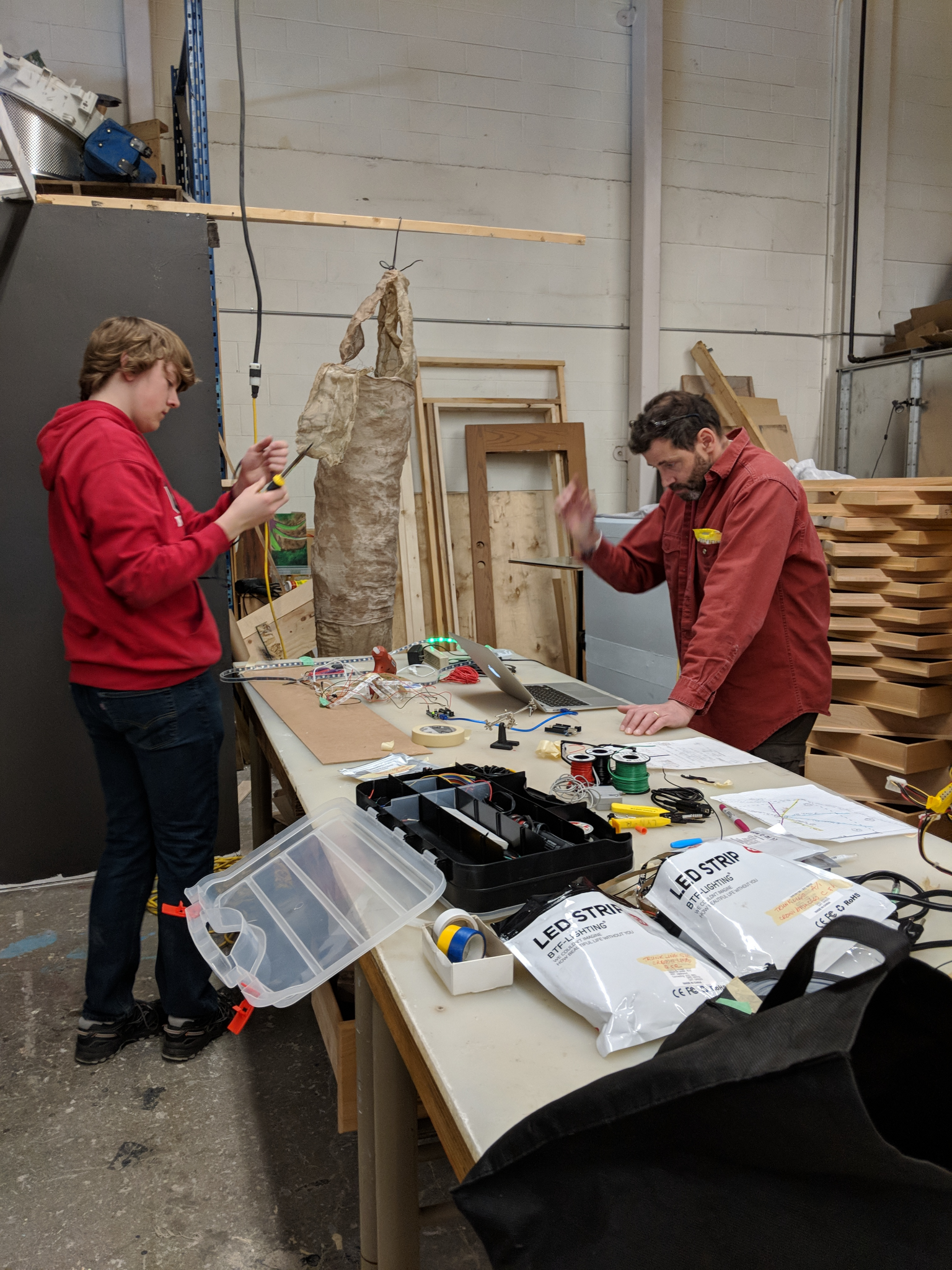
Lighting design and construction
Kieren O’Neil (left) soldering electronic components of installation lighting, and Kevin O’Neil (right) providing consultation on lighting design.
(Photo: Lyn Richards, March 2018)
The elements of light
The appearance of light moving within and between the trees of the grove to suggest transfer of nutrients between trees is created with electronic components. Arduino Uno-type microcontrollers are programmed to sequentially activate trains of light along ws2812b LED strings that run from the tree canopy, down branches and tree trunks, then out through the forest floor to other trees.
The ancient art of felting wool
Felted wool is the oldest known textile: the earliest evidence of its creative use dates over 8,000 years ago.
For this installation, a method was developed for hand-felting and dyeing large (1.3m x 2m) batts of wool. Loosely wrapped and rolled up in tulle (to hold the fibres together while allowing the dye to circulate), the batts were agitated in a large container filled with a hot dye bath, then rinsed, washed, rinsed again, and dried.
The resulting felt creates an ideal surface material for tree trunks and forest floor, since the rough, porous appearance of the material suggests both the irregular texture of bark and the softness of duff on the floor of the forest.
The variable texture of felted wool also acts as an optimal diffusion material over tree and forest floor illumination, since its uneven light transmission produces a complex, organic effect.